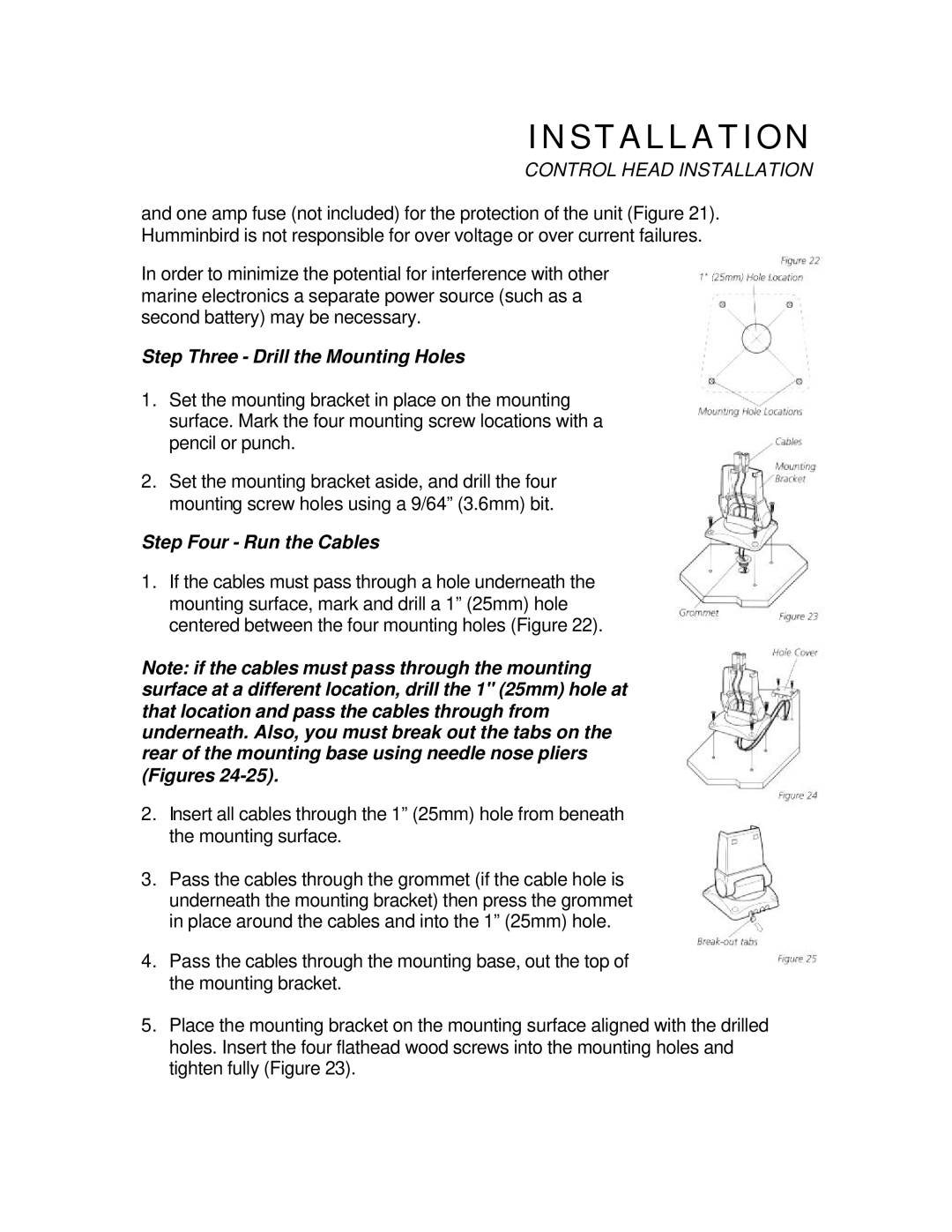
INSTALLATION
CONTROL HEAD INSTALLATION
and one amp fuse (not included) for the protection of the unit (Figure 21). Humminbird is not responsible for over voltage or over current failures.
In order to minimize the potential for interference with other marine electronics a separate power source (such as a second battery) may be necessary.
Step Three - Drill the Mounting Holes
1.Set the mounting bracket in place on the mounting surface. Mark the four mounting screw locations with a pencil or punch.
2.Set the mounting bracket aside, and drill the four mounting screw holes using a 9/64” (3.6mm) bit.
Step Four - Run the Cables
1.If the cables must pass through a hole underneath the mounting surface, mark and drill a 1” (25mm) hole centered between the four mounting holes (Figure 22).
Note: if the cables must pass through the mounting surface at a different location, drill the 1" (25mm) hole at that location and pass the cables through from underneath. Also, you must break out the tabs on the rear of the mounting base using needle nose pliers (Figures
2.Insert all cables through the 1” (25mm) hole from beneath the mounting surface.
3.Pass the cables through the grommet (if the cable hole is underneath the mounting bracket) then press the grommet in place around the cables and into the 1” (25mm) hole.
4.Pass the cables through the mounting base, out the top of the mounting bracket.
5.Place the mounting bracket on the mounting surface aligned with the drilled holes. Insert the four flathead wood screws into the mounting holes and tighten fully (Figure 23).
